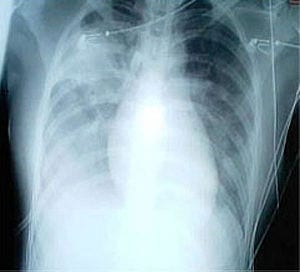
- Image via Wikipedia
The swine flu virus is rapidly making its way around the world, but it has been relatively mild so far, causing only 139 confirmed deaths. Could it mutate into something more lethal?
Scientists looking at its genetic structure say there is no obvious pressure for it to do so — no reason for this virus to “want,” in the Darwinian sense, to kill more of its hosts.
It is already doing a near-perfect job of keeping itself alive by invading human noses and inducing humans to cough it from one to another, said Dr. W. Ian Lipkin, director of the Center for Infection and Immunology at Columbia University’s Mailman School of Public Health.
“A really aggressive flu that quickly kills its host” — like SARS and H5N1 avian flu — “gives itself a problem,” Dr. Lipkin said.
But flu viruses are highly mutable, and anything could happen in the next two years, the time a new strain normally takes to circle the globe. After all, Spanish influenza began as a mild strain, then turned horrifically virulent, killing 20 million to 100 million people in 1918-19.
But Dr. Peter Palese, head of microbiology at Mount Sinai Medical School and part of the team that rebuilt that virus in 2005 from fragments found in old lung tissue, said that strain was a “once-a-millennium or once-every-10-millennia event — things like it don’t happen very often.”
Nor is it clear, he added, that viruses really “want” a particular outcome.
“For me, that’s too much anthropomorphic thinking,” Dr. Palese said. “Look, I believe in Darwin. Yes, the fittest virus survives. But it’s not clear what the ultimate selection parameter is.”
A mutation that confers lethality, he explained, may confer another advantage scientists have not pinned down.
The new virus has been described as “a real mutt” by Walter R. Dowdle, the former chief of virology for the Centers for Disease Control and Prevention, because of its unique mix of Eurasian and American swine, human and bird genes.
Related articles by Zemanta
- Swine Flu: What You Need to Know (abcnews.go.com)
- The Doctor’s World: Is This a Pandemic? Define ‘Pandemic’ (nytimes.com)
![Reblog this post [with Zemanta]](http://img.zemanta.com/reblog_b.png?x-id=78d5394a-aced-4a40-aa61-789a83c4ff61)








